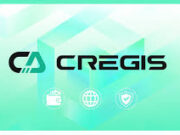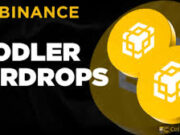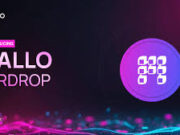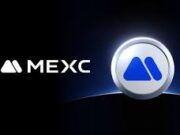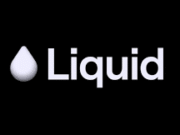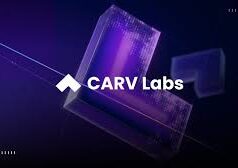In a landscape where Web3 and decentralised infrastructure are rapidly converging, EtherMail is preparing what looks like a bold stride forward. On this upcoming November 11, the platform plans to unveil a new communication layer that is designed not just for emailing—but for enabling users to connect, earn and engage within the Web3 ecosystem in fundamentally different ways.
This anticipated launch could mark a turning point in how we think about digital communication in a blockchain-enabled world. It isn’t simply a messaging update—it’s a potential infrastructure shift.
A Fresh Chapter in Web3 Communication
Let’s look at what EtherMail aims to deliver—with an eye toward how it may reshape communication.
1. From email to deep Web3 interaction
EtherMail already positions itself beyond standard email: its platform supports wallet-to-wallet communication, “email as a wallet” functionality and pay-to-read marketing models. (EtherMail)
With its new platform, users are expected to not only exchange messages, but actively engage with tokens, NFTs or dApps directly from their inbox-like environment. The promised transformation: your inbox becomes a portal into Web3 rather than just for messages.
2. Earn while you engage
A key component of EtherMail’s model is reward mechanics. Its token economy (via the $EMT token) aligns incentives with usage: open an ad email, read it, get rewarded. (EtherMail)
In the new platform, this kind of “earn from engagement” model is expected to go further—maybe interacting with communities, invitations, referrals, etc. Users may become rewarded not only for reading but for participating.
3. Brands, communities & direct connection
For brands, DAOs or Web3 projects, EtherMail offers direct line-of-sight to token-holders, wallet-addresses and engaged users. Its prior features emphasise private inboxes, aliasing, custom content preferences. (EtherMail)
The upcoming version is positioned to deepen that: delivering highly targeted messaging, community-driven engagement, and perhaps new SDKs for integrating interactions.
Why this development could be significant
Let’s explore why this feels more than incremental.
A) Lowering the Web3 onboarding barrier
One persistent challenge: many users are daunted by wallet setup, seed phrases, complex UX. EtherMail already launched its “Email-as-a-Wallet” solution, letting users use Google/Apple login and link to a self-custodial wallet. (Decrypt)
This upcoming platform might push that further—making a Web3-driven inbox feel familiar to Web2 users, thus helping scale adoption.
B) Elevating inboxes from passive to active
Most email services remain passive: receive, read, reply. EtherMail’s approach transforms it into an active engagement zone—where one sends and receives value, not just text.
That reorientation matters because it aligns with how Web3 wants to operate: value flows, permissions shift, communities form around tokens.
C) Less centralised communication, more user-control
EtherMail emphasises user ownership, encrypted wallet-to-wallet messaging, opt-in marketing. (EtherMail)
If the new platform realises these ideals more fully, it becomes a viable alternative to standard email systems for Web3 communities—less data extracted, more value shared.
What to look out for
As the roll-out approaches, here are key questions and signals to monitor.
- Features & UX: Will the new platform support full wallets, token/NFT transfers in the inbox, interactive message flows (eg. click to stake, participate, share)?
- Token integration: How will $EMT or another reward token be woven into user activities? Will users truly earn meaningful value?
- Security & privacy: With chain-linked inboxes, how is encryption handled, how is data custody managed? EtherMail’s FAQs state that E2E encryption only applies between EtherMail users; non-users still rely on TLS. (EtherMail)
- Adoption by communities/brands: Launch success often hinges on partner uptake. Will large Web3 projects or DAOs plug into it early?
- Scalability & spam mitigation: Rewarding users for reading content risks incentivising junk. Will EtherMail’s spam-filter and verification scheme scale?
- Clear launch date & roadmap: The “November 11” date is referenced but only via a secondary feed. (skynet.certik.com) Clarity around timing and feature set will matter.
A note on context
The broader industry is moving toward decentralised messaging. Academic work such as the “SendingNetwork” protocol explores edge-relay networks for wallet-address messaging. (arXiv)
EtherMail’s move may therefore be part of a larger wave: shifting away from centralised servers, extracting value from inboxes and building communication around wallets, tokens and communities.
In Summary
The upcoming platform from EtherMail has the potential to be more than just an upgrade—it might represent a new paradigm for how we communicate within Web3. Users might not only send emails but share value, join communities, earn tokens; brands might not only send newsletters but drive direct wallet-linked engagement.
If you are active in the crypto/Web3 space, December could mark a meaningful change in your inbox experience. From a user standpoint, the invitation is: keep your eyes open, test it early, and see how it fits your flow.
For brands and builders: this may be a moment to explore integration, think about how to leverage an inbox that’s also a wallet.
Sources:
- EtherMail website features page. (EtherMail)
- EtherMail token overview. (EtherMail)
- EtherMail Email-as-a-Wallet solution article. (Decrypt)
- EtherMail FAQs. (EtherMail)
- Secondary mention of launch November 11. (skynet.certik.com)
- Company profile. (tracxn.com)



